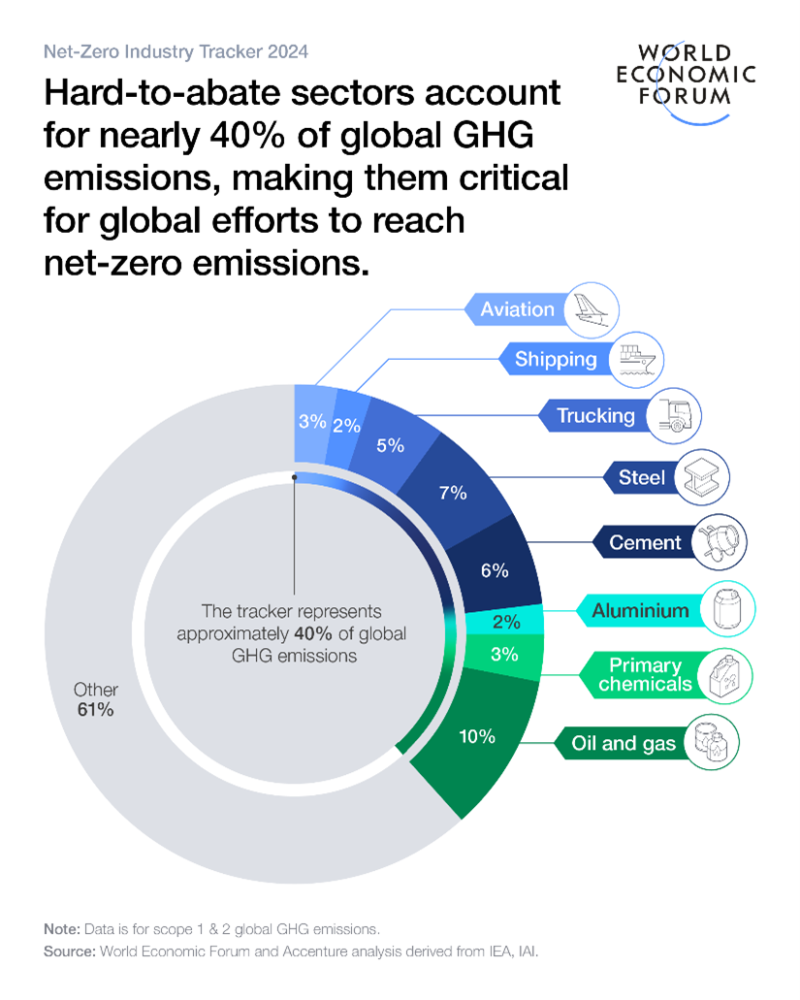As discussions around carbon capture and storage (CCS) continue, questions are being raised about its cost, effectiveness, and role in the broader energy transition. While some see CCS as a vital tool for reducing emissions, others are exploring whether its current deployment aligns with long-term climate and clean energy goals.
This article examines both sides of this debate by exploring the policies fueling the rise of CCS, its scientific and technical potential, and the sharp criticisms about its cost, effectiveness, and consequences.
Policy Support and Bankrolling
Across the globe, CCS initiatives are enjoying unprecedented financial and political support. In 2022, the US introduced the 45Q tax credit, which offers up to $85 per tonne of CO2 permanently stored. This aims to reduce the risk involved in investments and spur the startup of new capture and storage projects.
The EU also has established an innovation fund, a multibillion-euro program designed to funnel resources into cutting-edge CCS research and demonstration projects. Canada also has contributed to this global push with an investment tax credit (ITC), which can cover up to 60% of the startup and operational costs for carbon capture facilities and significantly reduces the financial strain on facility developers.
The UK has pledged to give out nearly $25 billion spread over 25 years to be used for carbon capture, use, and storage (CCUS) infrastructure. This investment is marked to be used for developing new industrial facilities equipped with capture and storage equipment, with the goal of decarbonizing the UK's key manufacturing areas.
Over 20 countries now include some form of CCS in their long-term emissions plans, which reflects a growing consensus among policymakers that CCS is a vital tool for achieving the world’s ambitious climate targets. Apart from countries and policy makers, major energy companies all over the world are now transforming their business models to incorporate carbon management.
Concerns and Challenges
In spite of the massive policy and financial support, significant concerns remain around the widespread adoption of CCS, including the following with criticisms.
Ethics and Environment
Government-issued policies offering incentives such as tax relief for companies investing in CCS are seen by some as a way to encourage industry participation in emissions reduction. However, there are concerns that these measures could prioritize established energy players and delay broader investment in renewable energy sources.
Scalability
Another concern is the feasibility for CCS to scale rapidly enough to have a substantial effect on global emissions. The latest Global CCS Institute’s Global Status of CCS 2024 reports global carbon capture capacity is about 50 million tonnes per year, which is significantly less than the more than 41.6 billion tonnes reported in 2024. This highlights the large gap between the current capabilities of CCS and the scale required to meet climate targets.
Cost and Effectiveness
Norway’s Longship project is highly regarded as a CCS project because it captures CO2 from both a cement plant and an energy facility, transports it via ship, and injects it into deep saline aquifers in the North Sea. The project cost about $3.4 billion to build, $2.2 billion of which was contributed by the Norwegian government.
In Phase 1, Longship will help store 1.5 million tonnes of CO2 annually. In Phase 2, it is expected to store over 5 million tonnes per year.
The 'Climate Savior' Argument
Supporters of CCS argue that it is a critical solution in the fight against climate change, one that complements renewable energy and helps achieve deep decarbonization.
Reducing Emissions from Difficult Sectors
CCS may have the ability to reduce carbon emissions from sectors such as cement, steel, and chemicals production (e.g. fertilizer). In these industries, CO2 is not just produced from burning fossil fuels for energy but also is released as a direct result of the chemical reactions involved in manufacturing or other operations.
For example, cement production involves the breakdown of limestone, and this process emits CO2 regardless of the energy source used. Currently, alternatives are limited for these industrial processes. Hence, they are commonly referred to as hard-to-abate sectors. One solution is that CCS can be used to directly capture CO2 generated from these sectors and prevent it from entering the atmosphere.

Removing Existing Atmospheric CO2 To Achieve Negative Emissions Technologies
CCS also holds promise in removing existing CO2 from the atmosphere through different techniques such as bioenergy with carbon capture and storage (BECCS) and direct air capture (DAC). This is especially important because most climate models rely on some level of negative emissions to meet global climate targets such as net zero by 2050. Even with aggressive reduction strategies or efforts, certain emissions will be hard to eliminate, so removing carbon already in the air is necessary.
Supporting Energy Transition and Economic Stability
Advocates also argue that CCS supports economic stability in regions that are heavily dependent on fossil fuels and are trying to transition to clean energy. Instead of the sudden closure of these infrastructures and the unavoidable mass layoffs that will follow, kickstarting CCS initiatives in these areas provides the option to transition existing infrastructure toward lower-emission usage, which prevents layoffs and saves jobs.
Reduced Setup and Operational Costs Over Time
Proponents of CCS also argue that scaling up technology could reduce its cost over time. They believe that early investments and government support can drive innovation and bring CCS into mainstream use.
The 'Fossil Fuel Lifeline' Argument
Financial Risk and Underperformance
Critics of CCS note that the technology remains costly, with estimates varying widely depending on the type of facility, capture method, geology, and scale of the project. Costs are typically lower at large, centralized sites with high CO2 concentration and close proximity to suitable geological storage.
Beyond financial considerations, some observers highlight the broader climate implications. If CCS technologies do not scale effectively or deliver the intended reductions in emissions, there is a risk that delayed action on climate mitigation could contribute to long-term environmental consequences.
Enhanced Oil Recovery (EOR)
One of the main concerns raised about CCS is its frequent connection to EOR, a process in which CO2 is injected into mature oil fields to boost oil production. While this method can result in some carbon being stored underground, the additional oil produced may lead to further emissions when used. As a result, some observers question whether CCS, when paired with EOR, could inadvertently support continued fossil fuel development rather than contribute to long-term decarbonization goals.
Opportunity Costs and Delayed Transition
Public funds are finite, and every dollar spent on CCS is a dollar not spent on other solutions such as renewables, energy efficiency, or grid upgrades. For example, onshore wind and solar photovoltaics (both renewable energy sources) only cost between $30 and $60 per tonne of CO2 reduced, which makes them cheaper than CCS. Critics also argue that focusing on carbon storage delays the transition to clean energy and anchors the economy to high-carbon infrastructure.
Low Capture Rates and Operational Challenges
Another significant concern is that CCS projects may underperform because of a combination of technical, economic, and operational challenges. A recent report by the Institute for Energy Economics and Financial Analysis found that, of 13 CCS projects examined, five projects underperformed materially compared with their own targets, three have failed, and two projects have not published data.
Expert Perspectives and Outlook
Leading climate institutions acknowledge that CCS has a role to play but stress that it must complement, not replace, the core pillars of decarbonization: renewables, electrification, and energy efficiency. For CCS to succeed, it must scale quickly, deliver high capture rates, and be economically viable.
Some experts hold optimistic views that some projects are promising and show a path forward. With strong political will and public investment, early projects can drive innovation and bring down costs. The hope is that incremental success over time will influence broader adoption.
Others remain wary. They argue CCS is a “fossil-friendly policy” that lets polluters delay real change. Some scientists warn against overreliance on this technology, noting that aggressive cuts through direct emission reductions are non-negotiable.
In places like the UK, CCS has become a major point of political division. The combination of public funding, fossil fuel lobbying, and underperformance has fueled a lot of backlash. The public accounts committee also warned that subsidies targeted at CCS initiatives should not replace investments in insulation, renewables, or demand reduction, the real “low-hanging fruit” when it comes to climate policy.
Final Thoughts
CCS technologies hold real scientific and technical promise. They offer a pathway to reduce emissions from hard-to-abate sectors and enable negative emissions through emerging approaches such as BECCS and DAC. In the right context, CCS can complement renewable energy initiatives and support the transition to a low-carbon economy. Its deployment today is met with mixed results and growing political and ethical concerns.
The outcome of CCS initiatives depends entirely on how it is implemented. If governed transparently, scaled responsibly, and integrated into a broader climate strategy focused on real emissions cuts, it can play an invaluable role in achieving net zero.
Ultimately, the true test of carbon storage may not be found underground but in the strength of oversight, political will, and public trust built around it.
For Further Reading
Primer: 45Q Tax Credits for Carbon Capture Projects, Carbon Capture Coalition.
The Section 45Q Tax Credit for Carbon Sequestration
Innovation Fund Projects, European Commission
Carbon Capture, Utilization, and Storage (CCUS) Investment Tax Credit (ITC), Government of Canada
Nearly £22bn Pledged for Carbon Capture Projects by P. Burnell, G. Sherlock, and R. Comerford, BBC
A Survey of the Net Zero Positions of the World’s Largest Energy Companies, Transition Pathways Initiative
Global Status of CCS 2024, Global CCS Institute
The Longship Project Is Near Completion, Norwegian Government
Longship Goes Into Operation—A Global Breakthrough for Carbon Capture and Storage, Norwegian Government
'Hard-To-Abate' Sectors Are Reducing Emissions, Here’s How They Can Accelerate Progress Toward Net Zero, World Economic Forum
Net Zero By 2050, IEA
Carbon Capture, Utilisation, and Storage, IEA
Carbon Capture and Storage at Scale: Lessons From The Growth of Analogous Energy Technologies by V. Rai and M. Thurber, Stanford University, and D. Victor, University of California
Renewable Energy—Powering a Safer Future, United Nations
Carbon Capture and Storage (CCS) Has a Poor Track Record, Institute for Energy Economics and Financial Analysis
Carbon Dioxide Capture and Storage, Intergovernmental Panel on Climate Change
Carbon Capture ‘Not Going to Happen,’ Top Fossil Fuel Advocate Predicts by G. Dembicki, Energy Mix


